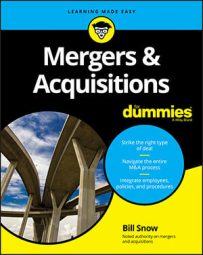The amount of information that the Seller needs to provide to a Buyer in an M&A deal frequently catches Sellers off guard. The Buyer needs access to information about all aspects of the company’s business in order to do her due diligence and the Seller is expected to provide access to that information immediately after the letter of intent (LOI) is signed.
Here is a comprehensive list of the financial documents that could apply to your deal. Not all of them will be applicable to every deal, but it’s a good list to start with so you don’t get caught off guard.
Accountant-prepared financial statements for the reporting period.
Most recent interim internal statements with comparable statements to the prior year.
Auditor’s letters and replies for the reporting period.
Credit report, if available.
Description of any change in accounting methods, policies, or procedures during the reporting period.
Description of the company’s internal control procedures.
Description of the company’s policy for capitalizing assets, including internal costs for internally constructed assets.
Description of depreciation and amortization methods.
Copy of the general ledger for each year-end of the reporting period and most recent month-end.
Copies of any projections, capital budgets, and business/strategic plans.
Copies of any analysis of fixed and variable expenses.
Copies of any analysis of gross margins.
Listing of all bank accounts and safety-deposit boxes, including authorized signatories.
Accounts receivable aging at each year-end of the reporting period and each month-end of the current year.
Detailed breakdown of the basis for the allowance for doubtful accounts.
Listing of bad debts during the reporting period.
Analysis of all accounts receivable currently in dispute and/or greater than 90 days old.
Schedule of prepaid expenses with backup documentation and accumulated amortization.
Schedule of deferred income at most recent year-end and month-end.
Schedule of security deposits at most recent year-end and month-end.
Schedule of all indebtedness and contingent liabilities.
Accounts payable aging at each year-end of the reporting period and each month-end of the current year.
Description of accounts payable year-end and month-end cut off policy and procedures.
Detail of accrued expenses as of the most recent year-end and month-end.
Detail of any customer advances, deposits, credit balances as of the most recent year-end and month-end.
Listing and detail for all related party transactions during the reporting period.
Listing of any adjustments to EBITDA and provide substantiation for those adjustments.

